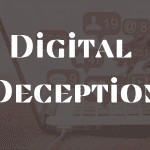Below is a summary of the session:
What Torture
Does to Human Beings
Normal
0
false
false
false
EN-US
X-NONE
X-NONE
MicrosoftInternetExplorer4
/* Style Definitions */
table.MsoNormalTable
{mso-style-name:”Table Normal”;
mso-tstyle-rowband-size:0;
mso-tstyle-colband-size:0;
mso-style-noshow:yes;
mso-style-priority:99;
mso-style-qformat:yes;
mso-style-parent:””;
mso-padding-alt:0in 5.4pt 0in 5.4pt;
mso-para-margin-top:0in;
mso-para-margin-right:0in;
mso-para-margin-bottom:10.0pt;
mso-para-margin-left:0in;
line-height:115%;
mso-pagination:widow-orphan;
font-size:11.0pt;
font-family:”Calibri”,”sans-serif”;
mso-ascii-font-family:Calibri;
mso-ascii-theme-font:minor-latin;
mso-fareast-font-family:”Times New Roman”;
mso-fareast-theme-font:minor-fareast;
mso-hansi-font-family:Calibri;
mso-hansi-theme-font:minor-latin;
mso-bidi-font-family:”Times New Roman”;
mso-bidi-theme-font:minor-bidi;}
Speaker: Douglas Johnson, Executive Director, Center for Victims of Torture
Respondent: Denise Massey
Johnson:
We at the Center for Victims of Torture see ourselves as predominantly a
clinical organization, but speaking out and finding allies became a clinical
necessity. Two voices emerged that
filled us with hope. The National
Evangelical Declaration Against Torture surprised us and stated what we knew in
our bones that torture and cruelty are certainly wrong and values and ethics
have a part to play in something so fundamental. They gave us hope we were not alone. The other voice is represented by Don Guter
and Steve Xenakis who when asked to act dishonorably were so alarmed that they
began to speak out. We need our military
leaders to remind us as Americans that our security does not come from cruelty,
but the values that sustain us and strengthen our world regard.
Torture is
not a theoretical discussion for those of us who work at the Center for Victims
of Torture. I've been asked to address the
question, "what does torture do to a human being?" We know of the impact on the victim. There is a great deal more research to be
done on the perpetrator. We have
research on what is done to the families.
We have some insights on what is done to the family of the abuser. We have some research on the broad societal
impact and enough anecdotal information on how to provide for the
communities. To fully understand the
impact of torture we must think on three levels, individual, family, and community
and two dimensions, perpetrator and victim.
We are getting a clear idea that there is a biological effect on victims,
not just psychological. Trauma disrupts
the developmental processes. The work
with someone who experienced torture is incredibly more difficult with someone
who experienced it at a younger age. There
is a problem of disrupted attachment. We
all have a need to be attached to others.
Often victims who reenter a community experience silence because the
community is afraid to reach out and of what it will learn from victims,
increasing their sense of isolation.
Victims form bonds with their tormenters and come to blame
themselves. This is what psychologists
call ‘soul murder.'
Popular
imagination equates torture with physical brutality in extreme forms, and this
is true, but torture has always been psychological. Forms of torture create three broad
categories, physical, emotional, and cognitive. Some forms leave physical scars, others leave
only psychological scars. Some
techniques leave more subtle signs, such as stress positions that can cause
spinal or organ damage that can mask itself as other conditions.
Torture of
children is often used as a tool against parents. A key element of torture scenarios is posing dilemmas
that have no satisfactory outcome. One
client in such a scenario felt complicit in her torture and guilty. The participation in one's own torture has
stunning long term psychological impacts.
Beyond physical torture, it is psychological torture that impacts
victims for the rest of their lives.
Many victims re-experience the trauma they suffered in their everyday
lives. There is better evidence that
there is a biological reason for these occurrences and we hope to learn from
that research to develop coping mechanisms.
[. . .] It is important to underscore that, despite
wishful thinking, this is not suffering that time simply heals. One client could not sleep because the
nightmares were so severe. He would sit
in a kitchen chair so that when we started to fall into a deep sleep he would
wake up to prevent the nightmares. Through
our work with survivors we've reached conclusions that we believe are pertinent
in these times. Torture in the modern
world is not primarily a tactic to gain information, but fear. Consider the execution of Jesus. It is easy to forget that he underwent
torture, and the reason was for the effect it would have on those who
watched. Torture is meant to send a
message of fear. And just because we don't
see our actions through those lenses doesn't mean the rest of the world doesn't
view them through their experience.
The
successful creation of an abusive team must involve the cognitive dissonance
for those carrying out the acts to separate what they do from their other
social interactions. This requires
strong leadership. We have been
approached by a number of perpetrators of torture and it may take one or more
interviews to discover that they were the perpetrators. Often they exhibit similar symptoms to
victims. One instance in Argentina, a
perpetrator could not find healing because to do so would make him a traitor to
the Argentine military. This is something
to keep in mind when we think of our men and women in uniform.
This is what
I know. I know that at least one of
those three people hanging on the cross was innocent. I know that all three are my concern. I do not have the luxury of hating those who
have harmed our nation once they are the victims of torture.
Massey:
Every example of pain in the world that is not healed deserves
attention. When you experience painful
emotions during a presentation, reading etc, pay attention to it and rely on
the healing process.
What I would
like to do is to share my emotional responses to this presentation to help you
explore your responses. I am angered
about what human doings do to one another and I am sad. Anger provides us with the energy to make
changes and protect what is important to us.
Many spiritual traditions teach the following: We are all one, what happens to others
matters to me, do unto others and you would have them do unto you, or do not do to others what you would not want done to you, and finally that
we are to love each other and God. Many
of us are angered by torture because of the threat it poses to our faith.
Now let's
look at sadness. Sadness asks us to
release something and to restore something.
When I look at torture I must release the denial that tells me these
things that cannot happen, the numbness to the pain, and the belief that there
is nothing I can do.
I must
restore my ability to see and respond to the truth. I also restore my belief that I can
participate in changes that are larger than myself. We need our religious resources to help us
end torture. We need all of our resources. I hope we will continue to learn from and
help each other. I believe that our
interfaith work brings healing for our national soul.
These are
the actions I will take. I will stay
attuned to the work of God in my life, become aware of our nations policies,
hear the story of victims, contribute to the healing of survivors, and choose
one organization to join and one action to contribute to the end of torture. I encourage you to choose one small, concrete
step to move toward healing, to communicate the message that something is wrong
and to contribute the energy to change it.
May we each experience the grace to find our part to communicate the
message of no torture, no exceptions.










